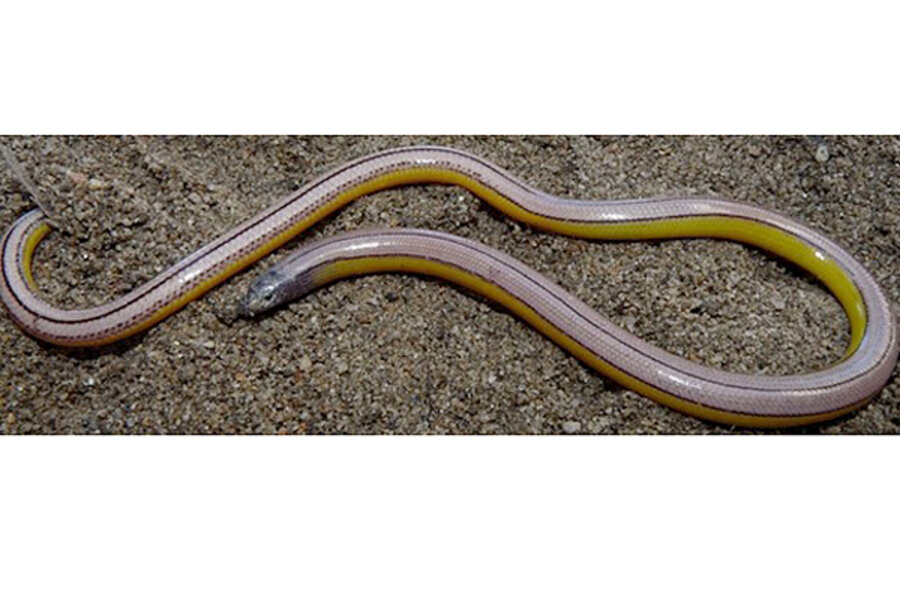Four new species of legless lizards discovered in California
Loading...
Four previously unknown species of snakelike creatures have been found in California — but don't call them snakes; they're legless lizards. Prior to the discovery of the new species, there was only one known legless lizard species in the state: the California legless lizard.
Surprisingly, the newfound legless lizards were discovered at a series of sites that weren't exactly pristine: They include a dune bordering a runway at Los Angeles International Airport; an empty lot in downtown Bakersfield, Calif.; a field littered with oil derricks; and the margins of the Mojave Desert.
"This shows that there is a lot of undocumented biodiversity within California," Theodore Papenfuss, a herpetologist at the University of California Berkeley's Museum of Vertebrate Zoology, said in a statement from the school.
The lizards live their entire lives underground or near the surface, and often don't leave an area the size of a small table, the statement noted. When they are found at the surface, it's usually in moist areas under dead wood or logs — or cardboard.
To find the lizards, Papenfuss and James Parham, a researcher at California State University, Fullerton, placed thousands of slips of cardboard at various sites around central and Southern California. They then checked and rechecked the sites before finally finding the four new species.
Three of the animals were found in the southern San Joaquin Valley. "These are animals that have existed in the San Joaquin Valley, separate from any other species, for millions of years, completely unknown," Parham said in the statement.
The species found near the oil fields has a silver belly and is named Anniella alexanderae. The yellow-bellied Anniella campi lives in three isolated dry canyons on the edge of the Mojave Desert, east of Walker Pass in the Sierra Nevada Mountains. The purple-bellied Anniella grinnelli was found in three vacant lots in Bakersfield, though only one of these lots remains. The fourth species, found outside the valley near the airport, is named Anniella stebbinsi.
Legless lizards live in loose soil on five continents, eating insects and larvae, and this limbless trait has independently evolved several times, the statement noted. It is difficult for the untrained eye to distinguish these creatures from snakes. However, unlike snakes, many legless lizards have external ear openings and movable eyelids. They also typically spend their entire lives underground, unlike snakes.
The species were named after four UC Berkeley scientists: Museum of Vertebrate Zoology founder Joseph Grinnell, paleontologist Charles Camp, philanthropist and amateur scientist Annie Alexander and herpetologist Robert Stebbins.
There are several species of legless lizards in the U.S. Southeast as well, known as glass lizards.
The animals are described in a study published Sept. 17 in the journal Breviora.
Email Douglas Main or follow him on Twitter or Google+. Follow us @livescience, Facebook or Google+. Article originally on LiveScience.
- Image Gallery: 25 Amazing Ancient Beasts
- Album: Bizarre Frogs, Lizards, and Salamanders
- Top 10 Useless Limbs (and Other Vestigial Organs)
Copyright 2013 LiveScience, a TechMediaNetwork company. All rights reserved. This material may not be published, broadcast, rewritten or redistributed.





